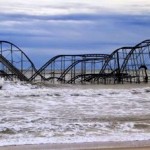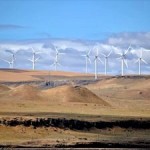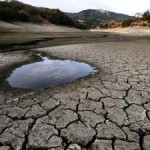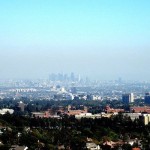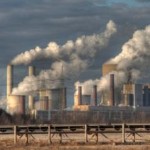‘Blown Away’
“We were blown away by how incredibly well that worked to predict lightning strikes,” he said.
They then looked at 11 different climate models that predict precipitation and CAPE through this century and are archived in the most recent Coupled Model Intercomparison Project (CMIP5). CMIP was established as a resource for climate scientists, providing a repository of output from global climate models that can be used for comparison and validation.
“With CMIP5, we now have for the first time the CAPE and precipitation data to calculate these time series,” Romps said.
On average, the models predicted an 11 percent increase in CAPE in the US per degree Celsius rise in global average temperature by the end of the 21st century. Because the models predict little average precipitation increase nationwide over this period, the product of CAPE and precipitation gives about a 12 percent rise in cloud-to-ground lightning strikes per degree in the contiguous US, or a roughly 50 percent increase by 2100 if Earth sees the expected 4-degree Celsius increase (7 degrees Fahrenheit) in temperature. This assumes carbon dioxide emissions keep rising consistent with business-as-usual.
Exactly why CAPE increases as the climate warms is still an area of active research, Romps said, though it is clear that it has to do with the fundamental physics of water. Warm air typically contains more water vapour than cold air; in fact, the amount of water vapour that air can “hold” increases exponentially with temperature. Since water vapour is the fuel for thunderstorms, lightning rates can depend very sensitively on temperature.
In the future, Romps plans to look at the distribution of lightning strike increases around the US and also explore what lightning data can tell climatologists about atmospheric convection.
Romps’ co-authors are Jacob Seeley, also of the Department of Earth and Planetary Science at UC Berkeley, and David Vollaro and John Molinari of the Department of Atmospheric and Environmental Sciences at UAlbany.
The work was supported by the US Department of Energy’s Office of Advanced Scientific Computing Research and Office of Biological and Environmental Research, and the National Science Foundation (NSF).
Check the following link to read/download the Full Study – “Projected Increase in Lightning Strikes in the United States Due to Global Warming”:
http://www.sciencemag.org/content/346/6211/851.short
Source: By Robert Sanders, UC Berkeley.

